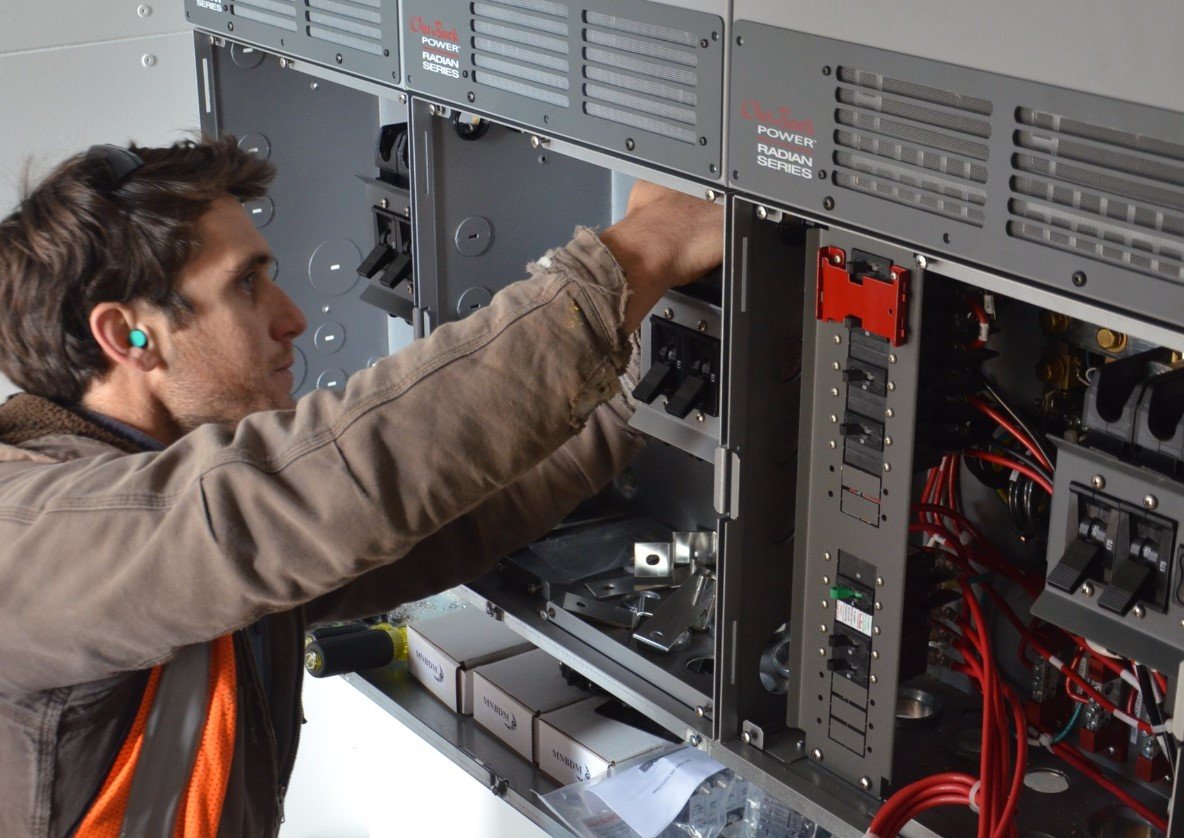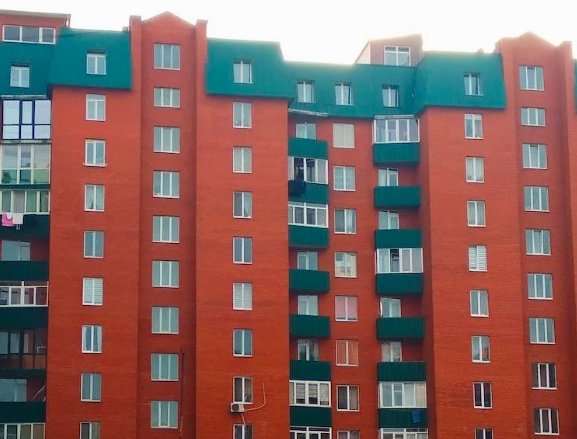Off-the-grid living is an increasingly popular lifestyle choice among those seeking to minimize their impact on the environment and become more self-sufficient. It involves living independently of the traditional power grid and relying on alternative sources of energy, such as solar power. One of the key ways homesteads are harnessing sustainable power is through solar photovoltaic systems.
Solar photovoltaic systems are an important tool for off-grid homesteaders, providing them with reliable and sustainable power. These systems harness the energy of the sun and convert it into electricity, which can be used to power everything from appliances to tools. They are particularly well-suited to homesteads, which typically have large amounts of land available to install solar panels and numerous buildings that require power.

The benefits of renewable energy are manifold. By using solar photovoltaic systems, off-grid homesteaders are able to reduce their carbon footprint and lower their energy costs over the long term. Additionally, these systems are virtually maintenance-free, meaning that once they are installed, homesteaders can enjoy reliable, sustainable energy without needing to worry about ongoing costs or repairs.
What is a Homestead?
A. Definition of Homestead:
A homestead is defined as a dwelling with land, outbuildings, and other amenities that are necessary to sustain the family living on the property. It is a self-contained and self-sufficient living arrangement that allows its inhabitants to live off the land without depending on external resources.
B. Importance of Self-Sufficiency:
Self-sufficiency is the key factor that sets a homestead apart from a traditional home. In a homestead, the family grows their own food, generates their own energy, and relies on their own resources to meet their daily needs. This lifestyle is significant from an environmental, economic, and social perspective.
From an environmental perspective, homesteading reduces the carbon footprint and depletion of natural resources. Self-sufficiency also fosters independence and resilience in individuals and communities. It is important to note that self-sufficiency does not mean isolation from the modern world. Rather, it means being able to provide for oneself more sustainably, with fewer negative impacts on the environment.
From an economic perspective, self-sufficiency means independence from the high costs of retail products and services. Homesteading can also provide additional income streams through the sale of excess food, energy, or other products. This contributes to local economic development, and because homesteading is often done on a small scale, it is more likely to be sustainable over time.
From a social perspective, homesteading promotes community building and self-reliance. Neighbors, family, and friends can come together to share resources, knowledge, and skills. It can create a sense of shared purpose and responsibility, leading to stronger bonds and more resilient communities.
C. Comparison to Traditional Homes:
The main difference between a homestead and a traditional home is the level of self-sufficiency they provide. Traditional homes rely on external resources for their daily needs and require utility connections to provide power, water, and other essentials. On the other hand, homesteads are designed to provide everything required for daily life without depending on external resources or utility connections. They are often more self-contained and use renewable energy sources like solar, wind, or hydropower, as seen in the article Off the Grid and Living Large: Solar Photovoltaic Homestead Power.
Homesteads are typically located in rural areas with ample room for gardens, livestock, and other resources. They often have a smaller ecological footprint than traditional homes, as they make use of sustainable practices like rainwater collection, composting, and organic farming.
Solar Photovoltaic
A. Definition of solar photovoltaic:
Solar photovoltaic (PV) is a method of generating electricity using solar panels. These solar panels contain solar cells with semiconducting properties that convert sunlight into usable electricity through the photovoltaic effect. The photovoltaic effect refers to the process of photons from sunlight releasing electrons in the solar cells to create an electrical current.
B. How Solar Panels Work:
Solar panels work by harnessing sunlight and converting it into electricity. A solar panel consists of several solar cells that are made up of semiconducting materials, such as silicon. These materials absorb the photons of light that hit them and transfer them to the electrons, which are freed from their atoms’ bonds. This movement creates an electrical current in the form of direct current (DC) electricity. Once the DC electricity is produced, an inverter converts it into alternating current (AC) electricity that can be used to power appliances or sent back to the grid.
C. Comparison of Solar Energy to Other Renewable Energy Sources:
Solar energy has several advantages when compared to other renewable energy sources, such as wind and hydroelectric power. Unlike wind and hydroelectric power, which require specific geographic locations, solar panels can be installed anywhere and are more accessible to residential consumers. Additionally, solar energy doesn’t require any moving parts, which means that solar panels require minimal maintenance. Finally, solar energy is one of the most abundant and reliable energy sources, making it an attractive option for many homeowners who want to invest in renewable energy but don’t want to weather-dependent options like wind or hydroelectric power. That being said, solar energy also has some limitations in terms of generating capacity, and its efficiency can reduce during overcast weather. Nevertheless, the advancements in solar technology have allowed solar panels to become more efficient over time and more cost-effective, thus making it a very attractive alternative energy source for many households.
Renewable Energy
A. Benefits of renewable energy:
Renewable energy sources like solar, wind, water, and biomass offer numerous benefits that make them an important choice for homestead power. Some of the benefits include:
1. Clean energy: Renewable energy sources do not emit harmful pollutants, unlike non-renewable sources like coal, natural gas, and oil. This makes them a cleaner and safer option for homesteads.
2. Cost-effective: Renewable energy sources are often cheaper in the long run as they do not require constant maintenance or fuel costs. Once installed, the system can provide free power for years.
3. Reliable: Renewable energy sources are not subject to price volatility, supply disruptions, or outages, making them a more reliable source of energy in the long term.
B. Why renewable energy is important:
Renewable energy is important for various reasons, including:
1. Climate change: Renewable energy helps to mitigate the effects of climate change by reducing greenhouse gas emissions and minimizing the reliance on fossil fuels, which contribute to global warming.
2. Energy security: Renewable energy sources help to reduce dependence on foreign oil and gas supplies, making countries more energy independent and secure.
3. Economic benefits: Renewable energy creates jobs, stimulates economic growth, and reduces energy costs in the long run.
C. Comparison of renewable energy to non-renewable energy:
Non-renewable energy sources like coal, natural gas, and oil are finite resources that are becoming increasingly scarce and expensive. They are also unsustainable as their use contributes to climate change and environmental degradation. On the other hand, renewable energy sources are abundant and inexhaustible, making them a more sustainable and cost-effective option for homesteads.
Sustainability
A. Definition of sustainability:
Sustainability refers to the ability to meet current needs without compromising the ability of future generations to meet their own needs. It involves meeting the needs of the present without compromising the needs of future generations in terms of social, economic, and environmental sustainability.
B. Importance of sustainability in homesteads:
Sustainability is important in homesteads because it helps to ensure the longevity and resilience of the homestead system. Sustainable practices like using renewable energy, conserving water, and minimizing waste help to reduce the impact on the environment and create a more self-sufficient system.
C. Comparison of sustainable living to traditional living:
Traditional living often involves reliance on non-renewable resources and creates waste that harms the environment. Sustainable living, on the other hand, involves using renewable resources, conserving resources, and reducing waste. This makes sustainable living a more responsible and long-term approach to homesteading. Furthermore, sustainable living creates a self-sufficient system that can provide for the needs of the homesteaders now and in the future, while traditional living creates a long-term dependency on external resources.
Energy Efficiency:
A. Definition of Energy Efficiency:
Energy efficiency is the ability to use less energy to accomplish the same task. It is about making sure that we get the most out of every unit of energy we use, by using it in an effective and efficient manner.
B. Importance of Energy Efficiency for Homesteads:
Energy efficiency is crucial for homesteads that aim to be off-grid and use solar photovoltaic power. By making the most of every unit of energy produced, homesteaders can reduce their overall energy consumption and, in turn, bring down their energy costs. Moreover, energy efficiency helps homesteaders maintain their batteries and electrical systems, leading to more reliable and durable systems.
C. Comparison of Energy-Efficient Homesteads to Traditional Homes:
Traditional homes typically rely on fossil fuels for power and appliances that are not designed with energy efficiency in mind. These homes often contain multiple energy-consuming appliances and systems, which ultimately lead to higher energy bills. In contrast, energy-efficient homesteads use renewable sources of energy, such as solar photovoltaic power, and have appliances that are energy efficient, such as LED light bulbs and energy-efficient appliances. This means they consume less energy and tend to have lower energy bills.
Net Metering:
A. Definition of Net Metering:
Net metering is a policy whereby the excess energy produced by a renewable energy source, such as solar photovoltaic power, is fed into the grid, and the homesteader is credited for this energy production. Further, net metering allows homeowners to draw energy from the grid when the solar system is not producing enough energy, without having to pay higher rates.
B. Benefits of Net Metering:
Net metering is a powerful policy that benefits homesteaders in several ways. Firstly, it encourages the use of renewable sources of energy, such as solar photovoltaic power. Secondly, it helps homesteaders to offset their energy costs by receiving credit for the energy they put back into the grid. Lastly, it brings in extra income for those homesteaders that produce more energy than they consume over time.
C. Comparison of Net Metering to Other Payment Options:
Other payment options for solar energy systems, such as feed-in tariffs, offer a fixed price per unit of energy produced, while net metering allows homeowners to offset the cost of energy consumed by the cost of energy produced, leading to credit in some cases. This incentive can encourage homeowners to maximize their energy production and efficiency, making it a better option than a flat per-unit payment scheme.
Battery Storage
A. Definition of battery storage:
Battery storage refers to the process of storing electricity generated by solar panels in batteries. These batteries serve as a backup source of electricity that can be used when the sun is not shining, or when there is an electricity outage. They store excess solar energy generated during the day, which can be used at night or during periods of low sunlight.
B. Importance of battery storage in homesteads:
Battery storage is crucial for homesteads that rely on solar energy as their primary source of power. Solar panels generate electricity during the day, but the energy they produce needs to be stored for later use. Without battery storage, homes would have to rely on traditional energy sources during the night or periods of low sunlight. This would defeat the purpose of having a solar-powered homestead, as it is crucial to be self-sufficient and have a reliable source of electricity.
C. Comparison of battery storage to traditional energy storage:
Traditional energy storage systems, such as fossil fuel generators, are inflexible and require constant refueling. They emit harmful pollutants and are expensive to maintain. Battery storage systems, on the other hand, are quiet, clean, and low-maintenance. They can store a large amount of energy and are flexible enough to be used in conjunction with solar panels, wind turbines, or other renewable energy sources.
Energy Independence
A. Definition of energy independence:
Energy independence refers to the ability of a homestead to generate its own energy and be self-sufficient. This means relying on renewable energy sources like solar, wind, or hydropower, and not relying on traditional energy sources such as fossil fuels.
B. Importance of energy independence for homesteads:
Homesteads that are energy independent rely primarily on renewable energy sources, which are clean, sustainable, and environmentally friendly. By generating their own electricity, homesteads can become self-sufficient, reduce their carbon footprint, and save money on energy bills. Energy independence also provides a sense of security and stability, as homes are not susceptible to power outages or energy price hikes.
C. Comparison of energy independence to traditional energy consumption:
Traditional energy consumption relies heavily on fossil fuels, which are expensive and environmentally damaging. Energy independence, on the other hand, prioritizes the use of renewable energy sources, which are cleaner, renewable, and cheaper in the long run. Traditional energy consumption is also highly dependent on the electricity grid, which can be unreliable and susceptible to power outages. Energy independence ensures that homesteads can generate their own power, without relying on external sources of electricity.
Green Living
A. Explanation of green living:
Green living is an environmentally conscious lifestyle that aims to minimize an individual’s impact on the environment by reducing carbon footprints, preserving natural resources, and protecting ecosystems. It involves making informed choices about daily activities such as transportation, energy usage, waste management, and food consumption. Green living means adopting sustainable habits and practices to promote a healthier and more sustainable lifestyle.
B. Importance of green living for homesteads:
Green living is particularly important for homesteads because they are often situated in remote or rural areas where resources are limited. Being off-grid, homesteads rely on renewable energy sources and need to be self-sufficient when it comes to energy, water, and food. Green living practices can help homesteaders reduce their energy and water consumption, manage waste efficiently, and promote a healthy environment that supports their self-sufficient lifestyle.
C. Comparison of green living to traditional living:
Traditional living focuses on convenience-oriented practices that often contribute to environmental degradation. Conventional energy and water sources are finite and contribute to pollution, whereas green living promotes sustainable practices such as conservation, recycling, and using renewable energy sources. Traditional living values convenience and instant gratification over sustainability, while green living encourages a mindful and informed approach to our daily actions.
Alternative Energy
A. Definition of alternative energy:
Alternative energy refers to any renewable or non-fossil fuel source of energy that can replace traditional energy sources such as oil, gas, and coal. Examples of alternative energy sources include solar, wind, hydroelectric, geothermal, and biomass energy. Alternative energy sources are clean, sustainable, and provide an endless supply of energy that can be harnessed by individuals or communities, often in off-grid locations.
B. Importance of alternative energy for homesteads:
Alternative energy is essential for homesteads because they are often situated in remote areas with limited access to traditional energy sources. Homesteaders need to be self-sufficient and rely on renewable energy sources to power their homes and farms. Alternative energy sources such as solar panels can provide unlimited, clean energy to homes, while wind turbines can generate electricity and water pumps can be powered with hydroelectric energy. Alternative energy sources also reduce the carbon footprint of homesteaders and help preserve the environment.
C. Comparison of alternative energy to traditional energy sources:
Traditional energy sources such as coal, oil, and gas are finite resources that contribute to environmental degradation and pollution. They are also prone to price fluctuations and supply interruptions. Alternative energy sources, on the other hand, are clean and renewable sources of energy that provide an endless supply of energy. They are also cost-effective in the long run and can be used to power homes and farms even in remote areas. While traditional energy sources rely on infrastructure such as pipelines and power grids, alternative energy sources can be harnessed by individuals or communities, making them a sustainable and empowering option.
Conclusion
In conclusion, this article has highlighted the benefits of solar photovoltaic power for those wishing to live off the grid. By harnessing the power of the sun, homeowners can produce their own electricity, reducing their dependence on traditional energy sources. The article has discussed the importance of energy efficiency, battery storage, and proper installation when setting up solar photovoltaic systems, and how they can serve as a genuine source of sustainable living.
The ability to live off the grid and still enjoy a comfortable lifestyle is now achievable through the use of solar photovoltaic power. With advances in technology, coupled with increasing climate change concerns, it is becoming clear that renewable energy sources are a crucial component of sustainable living. By utilizing solar power, individuals can reduce their carbon footprint and set a positive example for others to follow. It is vital that we explore alternative sources of energy and embrace sustainable living practices to ensure a cleaner and greener future for our planet.
FAQs – Solar Photovoltaic Homestead Power
1. What is Off the Grid Living?
Off-the-grid living refers to living independently without any public utilities, mainly electricity, water, or gas. It allows individuals to live in a self-sufficient and eco-friendly way.
2. What is Photovoltaic Power?
Photovoltaic power is a type of renewable energy that uses solar technology to convert sunlight into electricity. It involves installing solar panels on the roof or in other suitable areas of your home to generate electricity.
3. What is Sizing a Solar Array?
Sizing a solar array refers to determining the number of solar panels needed to meet your energy requirements. It depends on various factors such as the number of appliances you need to run, your daily energy consumption, the size of your home, and the location of your property.
4. What is an Inverter?
An inverter is a device that converts DC (direct current) electricity generated by solar panels into AC (alternating current) electricity, which is the type of electricity used in your home.
5. Can I Run my Entire Home on Solar Power?
Yes, you can run your entire home on solar power. However, it depends on several factors such as the size of your solar array, your energy needs, weather conditions, and how efficiently you use your energy.
6. How Do I Get Started with Solar Power?
To get started with solar power, you need to consult with a solar energy professional who can provide guidance on the installation process, sizing your solar array, and estimating the costs.
7. Is the Initial Cost of a Solar System Expensive?
Yes, the initial cost of installing a solar system can be expensive, but it varies depending on the size of your home and your energy needs. However, the long-term savings on your energy bill and the environmental impact make it worth the initial investment.
8. Can Solar Power be Used in Any Climate?
Yes, solar power can be used in any climate. However, the efficiency of the solar panels may vary depending on the amount of sunlight available in your area.
9. What are the Benefits of Using Solar Power?
The benefits of using solar power include reducing your energy bills, reducing your carbon footprint, increasing your energy independence, and contributing to a more sustainable environment.
10. Can I Sell My Extra Solar Energy Back to the Power Company?
Yes, you can sell your extra solar energy back to the power company through a process called net metering. This allows you to receive credit for the excess energy you generate, which can lower your energy bill even further.














